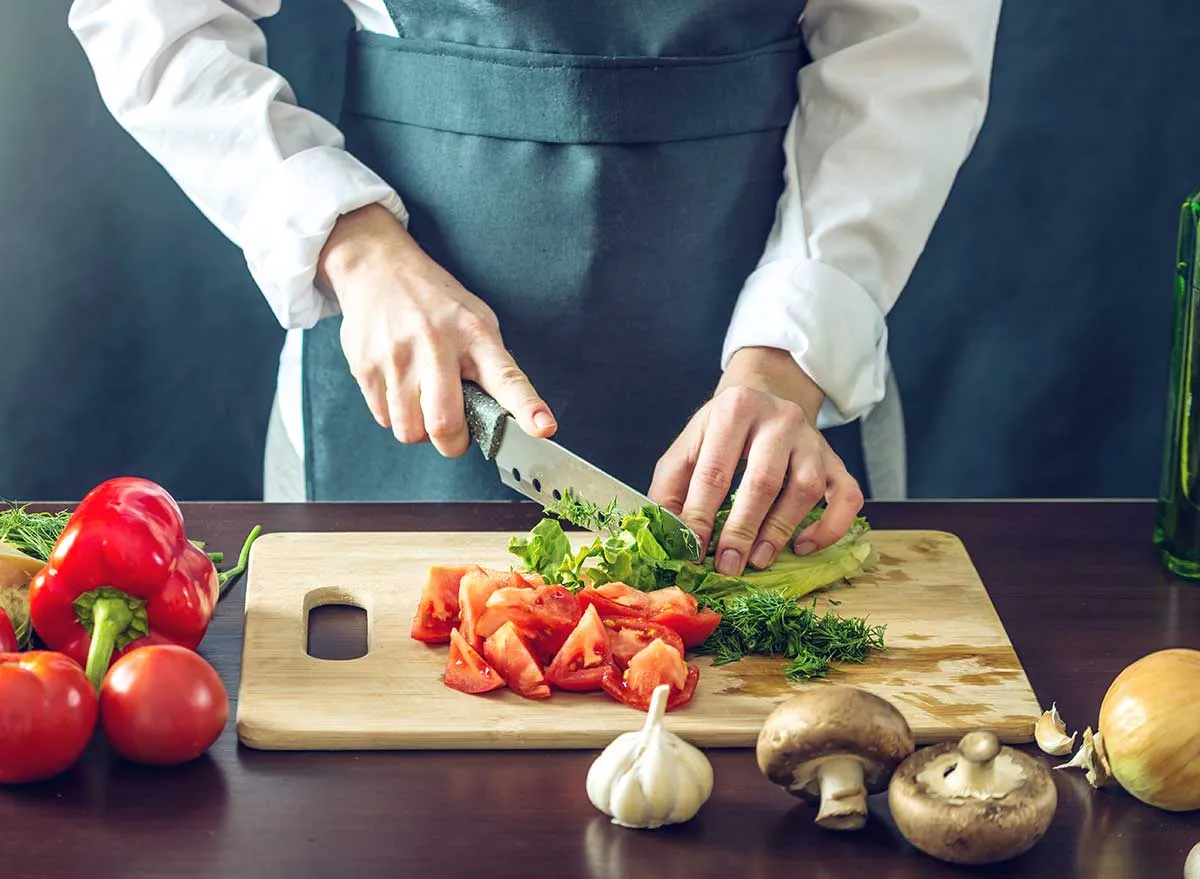In every professional kitchen, the importance of maintaining hygiene cannot be overstated. One of the critical elements in food preparation is your cutting board. Knowing how to sanitize wood cutting board is essential for ensuring the safety and quality of the food you serve. This guide will walk you through proven methods to keep your wooden cutting board clean and free from harmful bacteria.
Wooden cutting boards are often favored by chefs for their durability and aesthetic appeal. However, if not maintained properly, they can harbor germs, making it vital to establish a regular cleaning routine. Here, you will find effective techniques to sanitize your cutting board while preserving its longevity and functionality.
:max_bytes(150000):strip_icc()/prevent-cutting-board-slipping-1123-c9837c7f958745b792c2b115c7d7bccd.jpg)
Understanding the Importance of Sanitizing
Sanitizing your cutting board is crucial because it prevents cross-contamination of food, which can lead to foodborne illnesses. Raw meat, poultry, and seafood can introduce harmful pathogens, which can linger on your board if not properly cleaned. Regular sanitization practices can help minimize this risk.
Best Practices to Sanitize Your Wooden Cutting Board
1. Initial Cleaning
Before diving into the sanitizing process, start by cleaning the board with hot soapy water right after use. This initial cleaning will remove most food particles and grease, preparing the surface for thorough sanitization. Note that it is essential to avoid soaking your wooden cutting board as excess moisture can lead to warping.
2. Vinegar Solution
A simple yet effective remedy for sanitization is using a vinegar solution. Mix equal parts of white vinegar and water in a spray bottle. Spritz this mixture generously on the cutting board surface and let it sit for a few minutes. Wipe it off with a clean cloth afterwards. The acetic acid in vinegar is a natural disinfectant, making it an excellent choice for sanitization.
3. Baking Soda Paste
Baking soda acts as a natural abrasive and deodorizer. For tough stains, create a paste using baking soda and water. Apply this paste to the board and scrub gently using a soft sponge. Once done, rinse well with warm water. This method not only sanitizes but also removes odors.
4. Hydrogen Peroxide Spray
For serious sanitization, consider using hydrogen peroxide. This method is incredibly effective against a wide variety of pathogens. Spray a 3% hydrogen peroxide solution on your board, let it sit for 10 minutes, and then rinse off with warm water. Be cautious, though, as hydrogen peroxide can potentially lighten the color of your board if left too long.
Regular Maintenance for Longevity
Aside from occasional sanitization, proper maintenance is crucial for the durability of your wooden cutting board. Regular oiling helps in keeping it moisturized and prevents cracking.
5. Seasoning the Board
Seasoning your board is essential for maintaining its quality. Use food-grade mineral oil or beeswax to create a protective layer. Apply oil thoroughly after sanitizing your board, ideally at least once a month, or more often if it appears dry. For more detail on this process, refer to the article on seasoning cutting boards.
6. Avoiding Certain Materials
Avoid using harsh chemicals or abrasive materials when cleaning your cutting board. These can cause scratches that harbor bacteria. Instead, always opt for natural solutions, which lend themselves well to the integrity of the wood.
FAQs about Sanitizing Wooden Cutting Boards
1. Can I use bleach to sanitize my cutting board?
While bleach is a powerful disinfectant, it is not recommended for wooden surfaces. It can damage the wood and affect the flavor of the food. Stick with natural alternatives like vinegar or baking soda.
2. How often should I sanitize my cutting board?
It is advisable to sanitize your cutting board after preparing raw meat, poultry, or seafood. Otherwise, regular cleaning after each use should suffice.
3. What can I do to prevent warping of my wooden board?
To prevent warping, always clean and sanitize your board without soaking it in water. After washing, dry it immediately with a cloth and store it in a dry place.

Conclusion
Maintaining a clean cutting board is a fundamental component of kitchen safety that every professional must prioritize. By practicing regular sanitization techniques and proper maintenance, you can ensure that your wooden cutting board remains a trusted tool for years to come. Remember, its not just about maintaining your tools, but ensuring the safety of the food served to your customers.
If youd like to read more about keeping your cutting boards in top condition, check out this helpful guide on cutting board safety.
As an Amazon Associate, I earn from qualifying purchases.


























